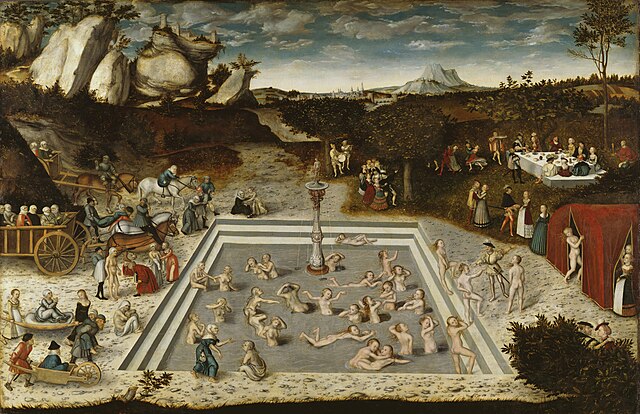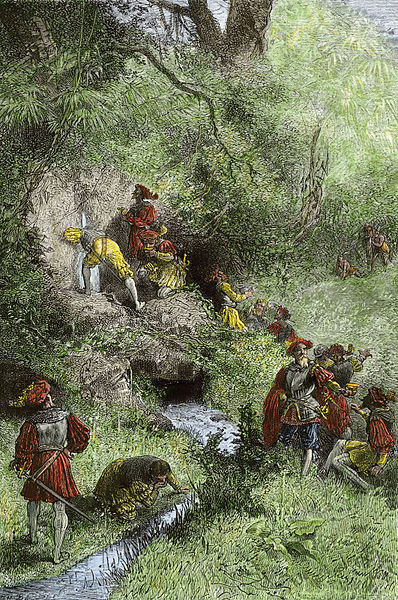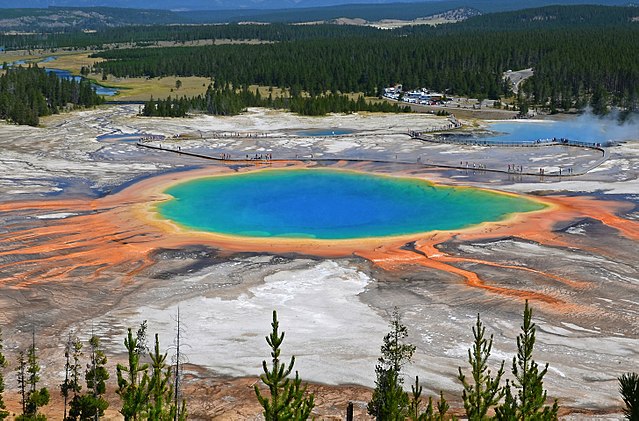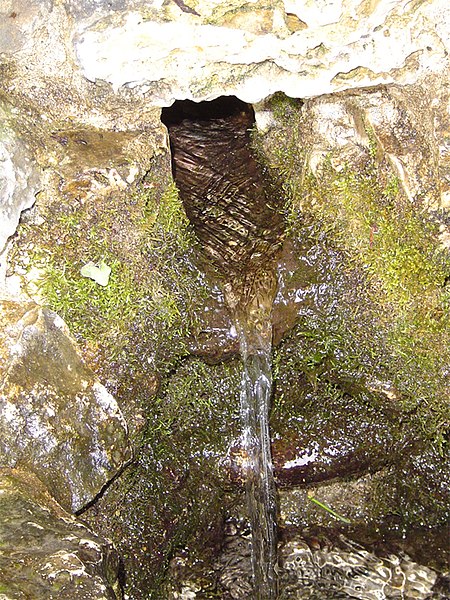The Fountain of Youth is a mythical spring which allegedly restores the youth of anyone who drinks or bathes in its waters. Tales of such a fountain have been recounted around the world for thousands of years, appearing in the writings of Herodotus, in the Alexander romance, and in the stories of Prester John. Stories of similar waters also featured prominently among the people of the Caribbean during the Age of Exploration ; they spoke of the restorative powers of the water in the mythical land of Bimini. Based on these many legends, explorers and adventurers looked for the elusive Fountain of Youth or some other remedy to aging, generally associated with magic waters. These waters might have been a river, a spring or any other water-source said to reverse the aging process and to cure sickness when swallowed or bathed in.
The Fountain of Youth, 1546 painting by Lucas Cranach the Elder
Persian miniature depicting Khidr and Alexander watching the Water of Life revive a salted fish
French 14th-century ivory mirror case with a Fountain of Youth
19th-century German artist's impression of Juan Ponce de León and his explorers drinking from a spring in Florida while supposedly seeking the Fountain of Youth
A spring is a natural exit point at which groundwater emerges out of the aquifer and flows onto the top of the Earth's crust (pedosphere) to become surface water. It is a component of the hydrosphere, as well as a part of the water cycle. Springs have long been important for humans as a source of fresh water, especially in arid regions which have relatively little annual rainfall.
On an average day nearly 303 million US gallons (1,150,000 m3) of water flow from Big Spring in Missouri at a rate of 469 cubic feet per second (13.3 m3/s).
Grand Prismatic Spring, Yellowstone National Park, Wyoming
A natural spring on Mackinac Island in Michigan
Sunrise at Middle Spring, Fish Springs National Wildlife Refuge, Utah








